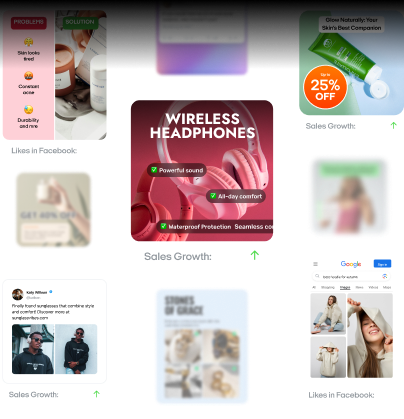Understanding the 3 differences between UGC video and AI UGC
What truly separates real UGC from AI-generated content? Zeely AI breaks down the three key differences between UGC video and AI UGC to help brands choose the most effective approach.
User-generated content, or UGC, is exactly what it sounds like — content created by your customers, not your brand. It’s unscripted, unfiltered, and built around real-life experiences. In marketing, that kind of authenticity has become a goldmine.
You’ve seen it everywhere: a TikTok unboxing, or a Google review that tells a story in three lines. These moments — whether they’re videos, photos, or UGC social media posts. They carry a level of social proof and relatability that polished campaigns struggle to match.
For digital marketers, UGC offers a direct line to authentic customer engagement. It strengthens the community, amplifies trust, and reinforces brand loyalty by letting real people speak for your product. That’s why it’s a core part of many organic and paid strategies today.
UGC isn’t professionally scripted or edited — it’s created by real users, which makes it both authentic and inconsistent. If you want to understand the difference between UGC video and AI UGC, and learn how to create AI-generated videos that feel authentic, keep reading.
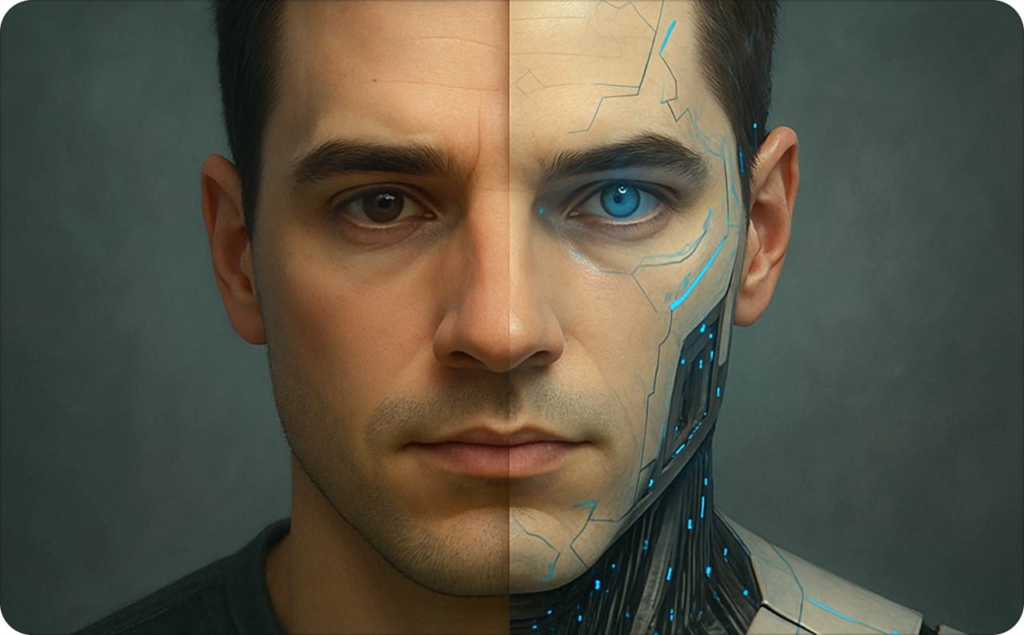
What is UGC ?
User-generated content is created by real customers — not your marketing team — and shared on public platforms. Unlike polished ads or influencer posts, UGC reflects real experiences and emotions, which helps brands build trust and drive deeper engagement with their audience.
Scroll through any product page, and you’ll find UGC in action: written reviews with star ratings, unboxing videos on TikTok, Instagram photos showing a product in use, or tagged stories from loyal fans. These moments are created by people who already believe in what you’re selling.
User-generated content includes images, videos, captions, or testimonials shared by real customers. Whether it’s a short video review or a snapshot posted on social media, this content feels more trustworthy because it isn’t scripted or paid for.
User-generated content works as powerful social proof. It helps potential customers feel confident by sharing real experiences. A personal review or casual product video often feels more trustworthy than a polished brand ad because it comes from real users.
This type of content also shows that people are actively engaged with your brand. They share stories, videos, and opinions without being asked. That builds credibility, encourages organic user engagement, and inspires others to join the conversation.
The trade-off is control. Since UGC isn’t made by your team, quality can vary. One video may be a compelling testimonial, while the next is low-quality or off-brand. This inconsistency makes it harder to manage campaigns and scale content across platforms.
What you gain and what to watch out for with UGC
Shoppers pay more attention to real voices than branded slogans. UGC has a strong pull because it proves your product works, shared by real users. That kind of content naturally builds consumer engagement, strengthens brand loyalty, and helps turn browsers into buyers.
User-generated content helps brands reach new audiences. People share videos and reviews on platforms where you may not even advertise, bringing in organic traffic. Real testimonials tend to perform better than scripted ads, particularly when the goal is to boost conversions.
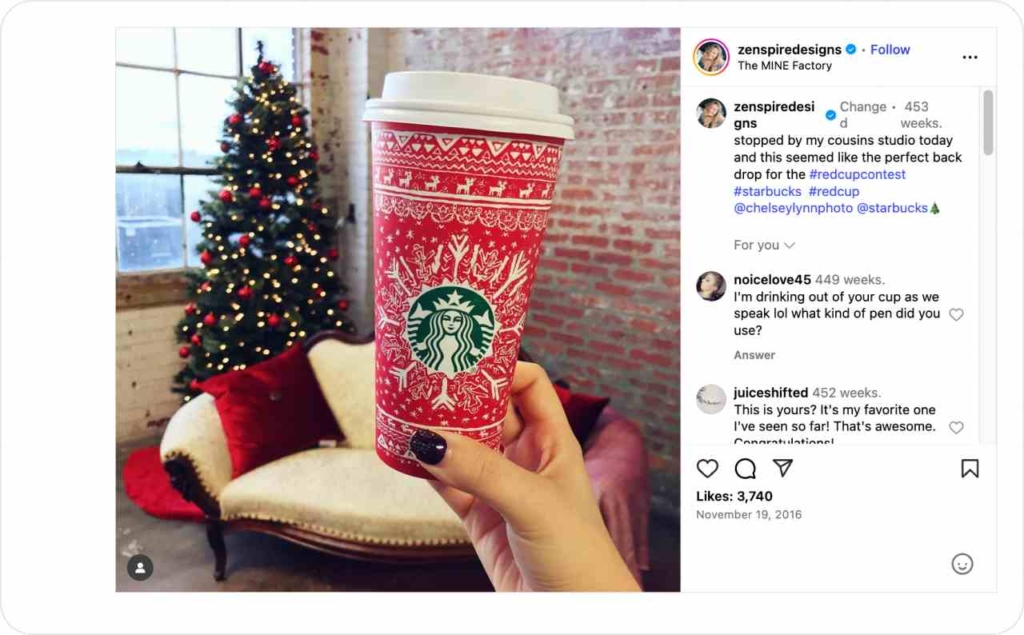
Photo source: @zenspiredesigns on Instagram #RedCupContest
But relying only on UGC can slow things down. You don’t know when content will arrive or if it’ll meet your quality standards. Reviewing, editing, and getting permission to use it can take weeks. Managing UGC often requires more time and resources than expected.
There’s also the legal side. Just because a customer tags your brand doesn’t mean you can use their video in a paid ad. Without clear agreements, repurposing UGC can lead to legal issues or hurt brand trust.
These limits have led many marketers to look for faster, more manageable options. AI-generated content offers a way to keep the authentic tone of UGC while solving for speed and control. It doesn’t replace real users — it supports them.
What Is AI UGC?
Marketing teams need rapid production without losing the human touch. Classic user-generated content feels authentic, yet quality control and cost hurdles slow campaigns. If you want to know what is AI UGC, it’s the innovation that bridges that gap. Generative algorithms and video-automation tools create user-style assets on demand — engaging for viewers and easy on budgets.
AI UGC covers any video, image, or copy built — or heavily refined — by artificial-intelligence models. The software studies real user language and visual habits, then produces pieces that sound and look like genuine fan posts. Audiences sense a human behind the message, even though code drives every frame.
A standard workflow combines three elements:
- Virtual AI avatars present on screen with realistic lip sync and facial micro-expressions.
- Automated script engines write brand-safe dialogue in minutes.
- Synthetic-video renderers blend avatars, b-roll, graphics, and music into a finished file.
That trio delivers 4K assets in a fraction of the time once reserved for studio crews.
What you gain and what to watch out for with AI UGC
Speed comes first. Production cycles drop from weeks to minutes, cutting expenses up to 80 percent and letting teams react to trends or seasonal pushes without new shoots.
Scale follows. One template can spin out hundreds of ad variants — different prices, colorways, or languages with no cameras. Retailers rely on AI UGC for quick product demos, while social teams launch virtual-creator videos that keep branding consistent across TikTok, YouTube, and Instagram.
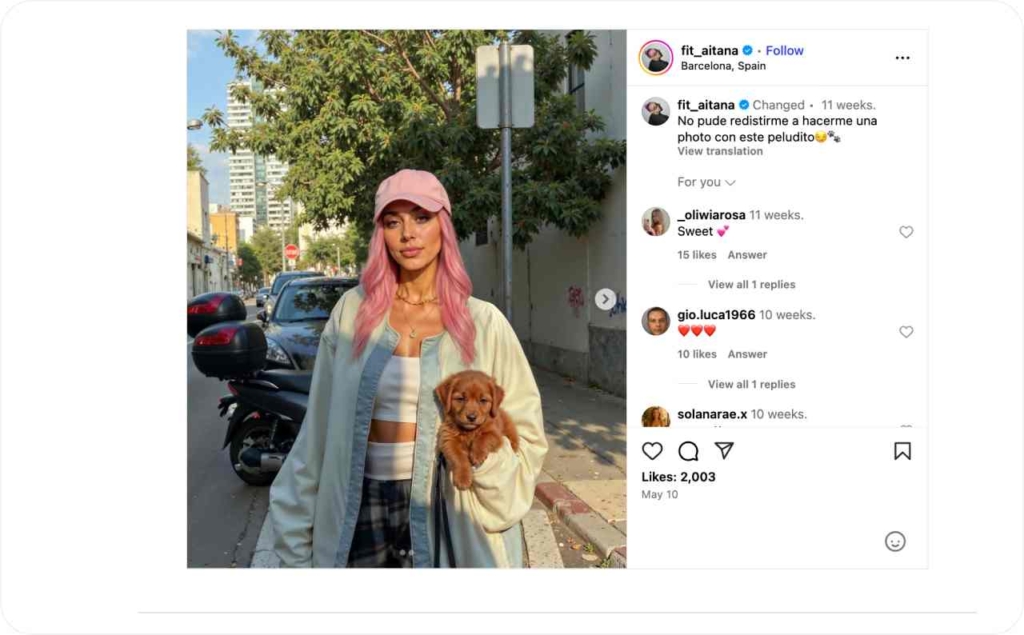
Photo source: @fit_aitana on Instagram
Consistency closes the loop. Automated pipelines lock every frame at 4K, balance audio, and apply approved fonts. Quality swings disappear, and rights issues fade because avatars and music are license-cleared by design.
How to choose between ugc and AI UGC for your business
User-generated content builds trust through sincerity, while AI-generated user content focuses on speed and efficiency. Choosing the right format depends on three factors: authenticity, production speed, and creative control.
Use UGC when you want trust from real people
Real customers speak in their own voice, making traditional UGC a strong driver of user trust. Nielsen reports that 92% of consumers trust earned media, such as word-of-mouth recommendations, showing how authentic content builds brand loyalty, though it can also be off-brand or inconsistent in quality.
Machine-generated assets face skepticism, yet AI UGC can still feel genuine when you weave in real testimonials, original user audio, or unscripted reactions. Pairing algorithmic polish with authentic snippets helps preserve content credibility while overcoming the unpredictability of pure UGC.
Use AI UGC when you need lots of content fast
Gathering, reviewing, and clearing classic UGC can drag on for weeks. That delay limits the volume you can ship and the speed at which you can join emerging trends.
AI changes the math. AI-powered pipelines generate hundreds of videos in minutes. Tools like Zeely AI reduce production costs by up to 20x compared to traditional workflows. Teams schedule flash sales and run rapid A/B tests without booking a single shoot.
Take full control of your content with AI tools
Community clips showcase unexpected angles and raw enthusiasm, but they rarely line up with strict brand guidelines. Fonts clash, messages wander, and legal approvals stall. AI UGC hands you the steering wheel. Choose an avatar, adjust background colors, and tweak scripts to match brand voice.
Zeely’s AI UGC video generator lets marketers tailor visuals, copy, and calls-to-action while still delivering user-style storytelling. The result: consistent creative output that aligns perfectly with campaign objectives yet rolls out in bulk.
Balancing authenticity and efficiency is no longer an either-or decision. Use genuine UGC when emotional impact matters most, and deploy AI-scaled variants when speed, volume, and precision take priority.
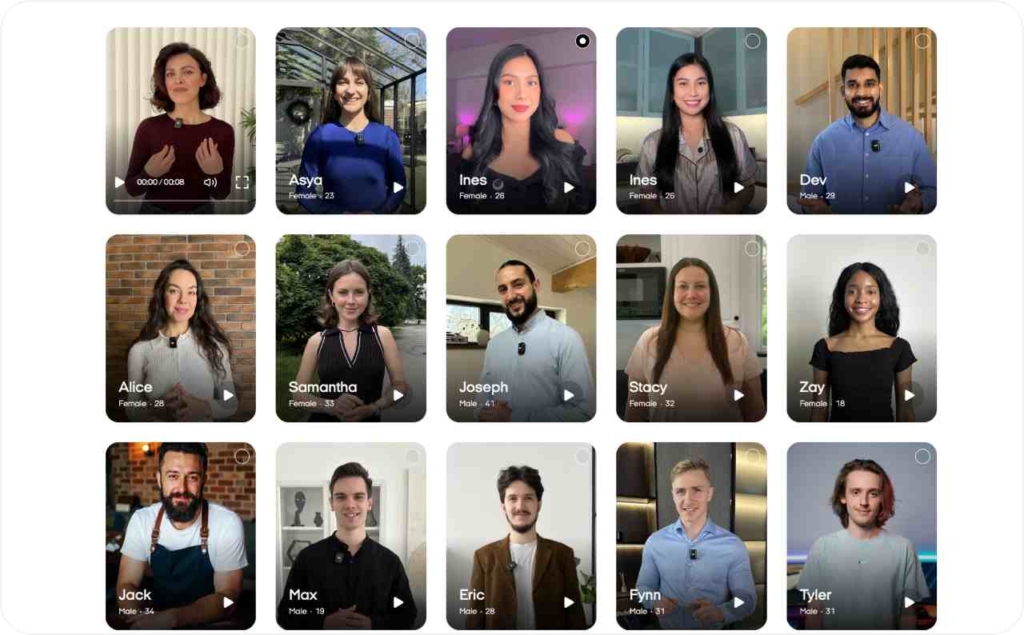
Key points about ugc and AI: Cost, speed, and results
Marketers often face a cost-performance dilemma. Traditional user-generated content offers authenticity but tends to be expensive and slow to scale. AI-Generated User Content changes that by delivering rapid, high-volume production with predictable pricing.
What you pay for UGC and AI UGC
Producing traditional UGC often carries hidden costs. Creator fees, usage rights, revisions, and management overhead can drive the per-video cost up to $150–$212. This model doesn’t work well for large-scale content strategies. It can be hard to produce hundreds of videos, even if you have a flexible budget.
With AI UGC platforms, you pay a monthly subscription, around $99/month for creating multiple videos instead of per-unit pricing. This eliminates surprise expenses and enables budget predictability at scale.
The cost per video becomes lower as volume increases, making AI-generated content a more sustainable model for campaigns with broad reach or frequent testing requirements.
How fast you can create content with each option
Campaign timelines often stall due to slow production cycles. Traditional UGC workflows require time to source content, secure approvals, and finalize edits. Producing even a few dozen videos can take weeks, which limits your ability to launch quickly or react to trends.
AI UGC speeds up production by generating up to 1,000 short videos in two hours if the videos are short and simple. Automation removes manual delays, helping brands launch faster and react to real-time marketing needs. This boost in time-to-market gives you a clear edge in fast-paced digital environments.
What results you can expect from UGC and AI UGC
While UGC is a real key for a better ROI, because real users deliver emotional impact, tracking performance across traditional UGC can be difficult. Engagement varies widely, and measuring ROI becomes complicated without clear benchmarks or structured testing.
Because every asset is built within controlled variables, AI UGC enables continuous optimization. This clarity supports smarter media spend and conversion-focused campaigns that evolve with audience behavior, delivering reliable performance data at scale.
For example, TikTok’s Smart Performance Campaign with Smart Plus AI delivered a significant boost in marketing efficiency. 71% of advertisers using the Smart Plus AI optimization tool saw a 10% better performance with Smart+ Web Campaigns and a 53% increase in return on ad spend.
UGC and AI UGC both bring value, but their strengths lie in different places. Traditional UGC fosters emotional trust and brand affinity. AI-powered production transforms content into a performance engine — designed for speed, cost-efficiency, and measurable return.
How you can combine AI videos and real customer content
Blending UGC with AI-generated content allows marketers to achieve both emotional authenticity and operational scale. When used together, these formats create a high-performing system that’s flexible, fast, and rooted in audience trust.
Use AI to work fast, then add real stories for trust
Use AI-powered tools to generate hundreds of personalized videos at scale — perfect for running A/B tests or launching geo-targeted campaigns. Then complement those assets with traditional UGC like video testimonials or product reviews that come directly from real customers.
This mix strengthens your content funnel. Automated assets increase reach and frequency, while authentic testimonials increase depth and conversion.
Imagine a tech startup using AI-generated video ads to drive traffic, then placing user-submitted reviews on its landing pages. This combination could lead to a 15% increase in sign-ups, blending automation with authenticity for stronger conversion.
Use AI-generated content to test hooks and offers quickly, then invite customers to submit traditional UGC that reflects the best-performing concepts. This keeps your message aligned while elevating the emotional tone through peer validation.
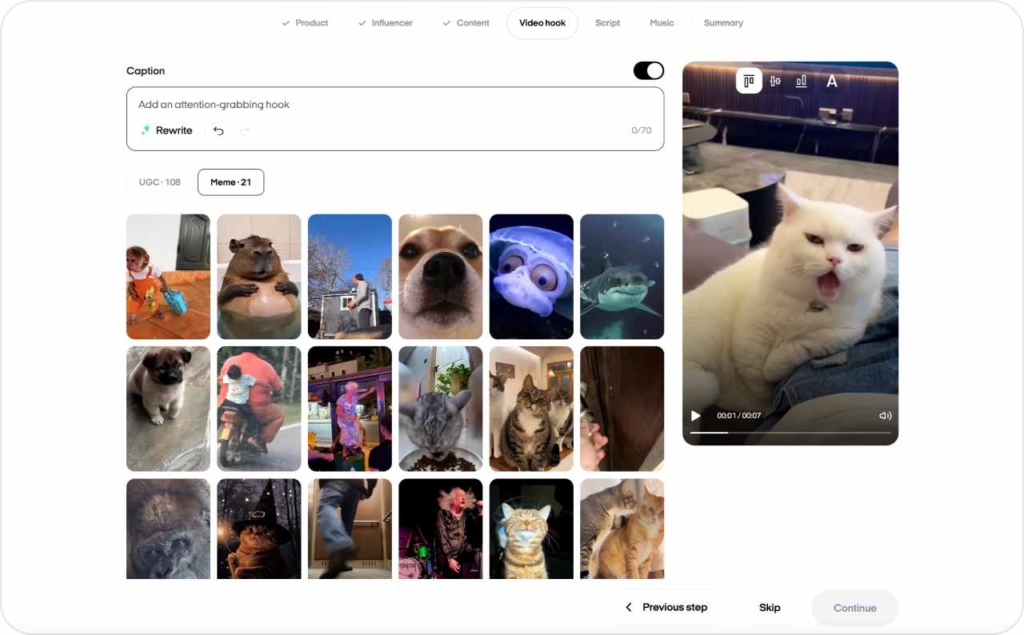
Tips to help you run a successful mix of AI and UGC
Success with hybrid campaigns depends on structure, clarity, and content integrity. The following practices help ensure your combined efforts drive real results.
1. Be transparent about AI content
Always label AI-generated assets, especially in testimonials, product demos, or ads. A small overlay or note helps set expectations and protects brand trust. If users feel misled, even strong performance can lose its value.
2. Review content before publishing
Automation creates volume, but quality still needs a human touch. Always check the final version before going live. A person can spot tone issues, unnatural phrasing, or visuals that feel too robotic. This keeps the message aligned with your brand voice.
3. Use each format where it works best
Choose traditional UGC for real customer stories, product reviews, or influencer content — places where trust matters most. Use AI UGC when you need speed, lots of variations, or localized content for different audiences.
4. Let performance data guide you
Track what works. If an AI-generated video hook gets strong results, invite your users to create UGC that builds on that message. This back-and-forth between AI and real people leads to better content and stronger conversion funnels.
5. Scale without losing quality
Combining both methods helps solve two common problems: tight budgets and creative burnout. By blending AI with real voices, you can produce large volumes of content that stay fresh, consistent, and trusted, without sacrificing quality.
How to create your first AI-powered video ad with Zeely
Finding UGC creators can take weeks. With Zeely, a UGC -style video takes about seven minutes to create and twelve minutes to render. You start with a product link and finish with a high-converting video, ready for any platform.
Step 1: Add your product link
Paste your product URL into Zeely. The platform instantly pulls in images, titles, and prices. You can also enter details manually if you have no website.
If you run a Shopify store, paste your store link, select a product category, mark Shopify as your platform, and hit Continue. Your products with images and prices will appear in the Products tab automatically.
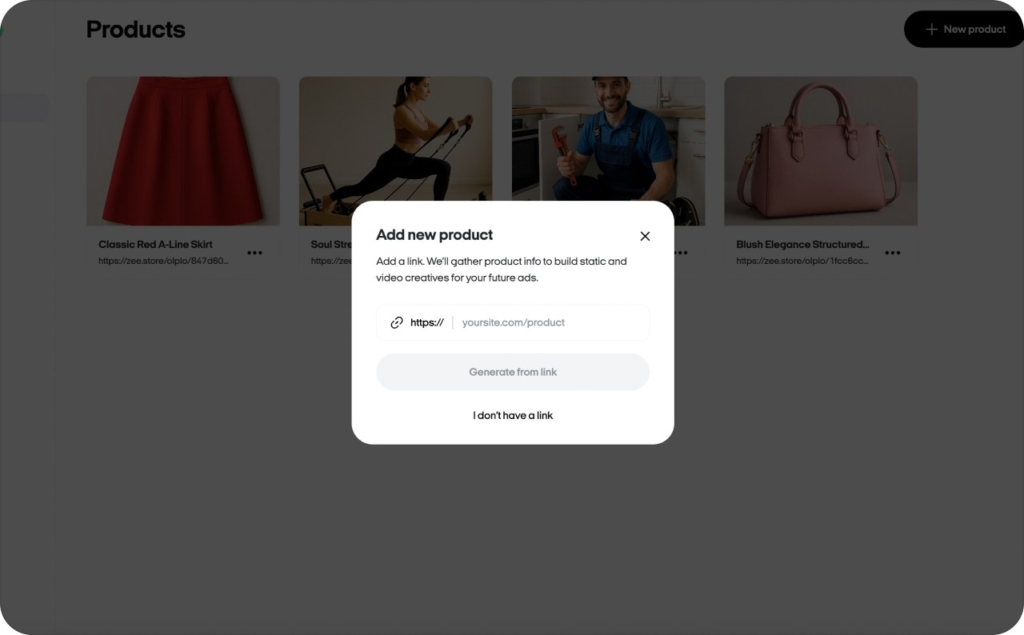
Step 2: Select the product you want to feature
Pick the product you want to advertise. As you add more items, Zeely organizes them so you can reuse them across multiple videos without starting from scratch.
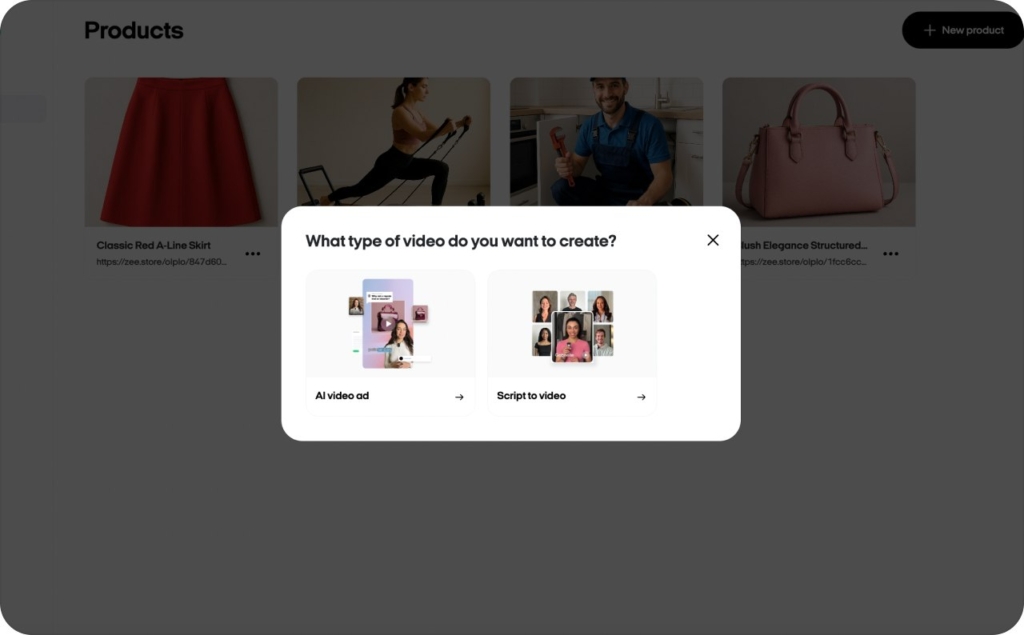
Step 3: Pick an AI avatar
Your avatar is the face of your message. Zeely offers over 150+ hyper-realistic AI avatars, covering a wide range of ages, styles, and personalities. Each one is powered by lip-sync technology for natural delivery. Choose it based on your target audience, not just your personal preference.
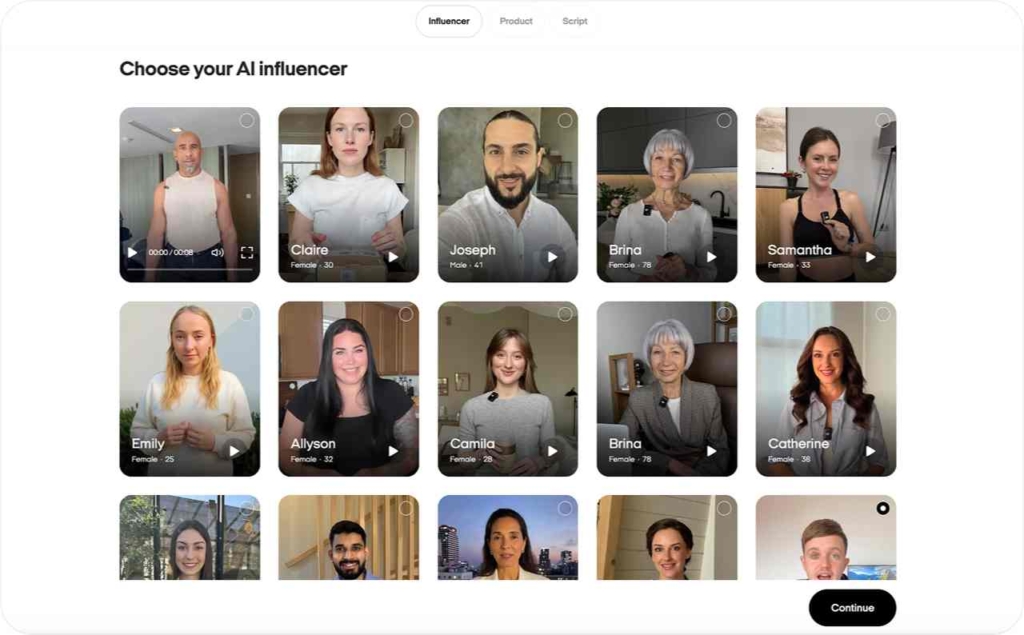
Step 4: Select a video script format
Zeely generates voice-over scripts using proven frameworks like AIDA, PAS, FAB, before – after – bridge, and 4U. It also uses popular techniques like Problem & Solution and Three Reasons Why. You can use the suggested draft, tweak it, or insert your own prompt. The AI adjusts for timing automatically.
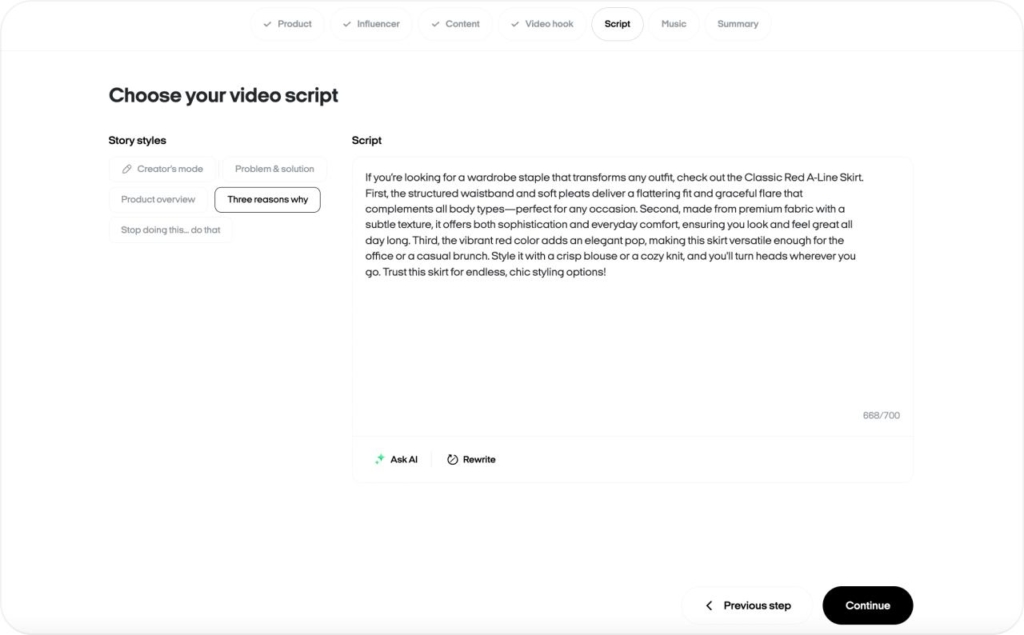
Step 5: Choose background music
Pick a soundtrack that fits your product and message. The built-in music library offers options for every tone — calm, upbeat, bold, or professional. You can preview the mix and refine visuals before locking it in.
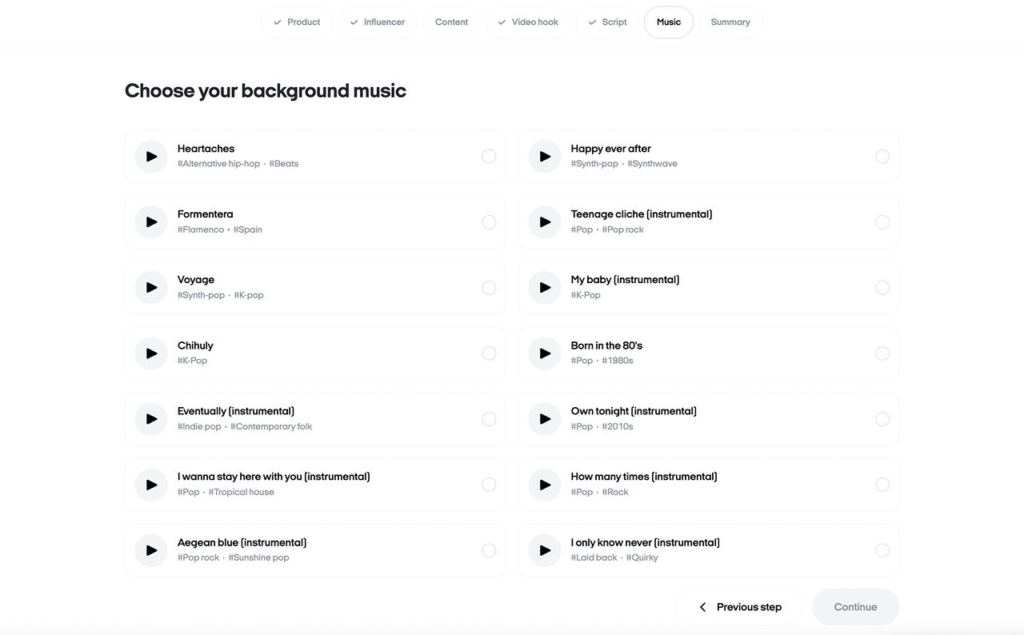
Step 6: Render and download
Click Render and give it about twelve minutes. Once it’s ready, download the video as an MP4 or publish the ad directly through Zeely. Every file is auto-sized for platforms including TikTok, Instagram, YouTube, Google, Pinterest, Etsy, Amazon, Wix, WordPress, and GoDaddy.
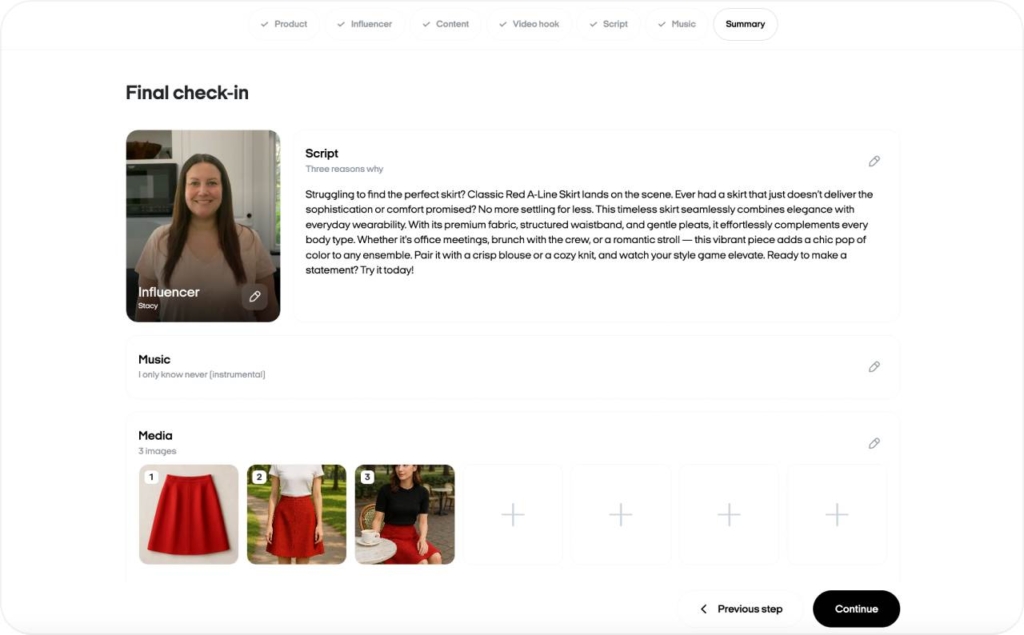
This fast and flexible workflow lets you build platform-ready video ads that feel authentic without waiting on creators or freelancers. Zeely handles everything — from scripting and avatars to rendering and launch.
Why you need UGC to build trust and drive sales
Video marketing isn’t about choosing between speed and authenticity — it’s about using both when needed. Smart marketers don’t just create more content; they build systems that adapt, test, and speak to their audience at every stage.
Top teams are shifting from one-off campaigns to always-on content engines. User-generated content brings trust through real voices, while AI-generated content delivers speed and scale. The goal is smarter delivery that responds to audience behavior.
Agility sets winning teams apart. AI helps test ideas in the morning, refine them by afternoon, and launch localized videos without re-shooting. Then UGC adds credibility by matching those proven messages. Automation and authenticity work together to drive better performance.
Tools like Zeely AI UGC Video Maker not just help you create faster, but also help you grow smarter. If you’re ready to move from reactive content planning to proactive performance-building, now’s the time to act. The next ad that hits could be yours — built by AI, refined by data, and looking authentic.
Also recommended



